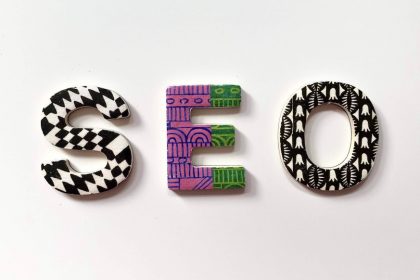Seven things you need to do this year to boost your SEO
Want to increase your chances of getting found and ranked by Google? Here are seven things you need to do this year to boost your SEO.
SEO is never a once-and-done activity. If you want to continue to climb up the search engine results pages (SERPs), and get ranked by Google you need to be continually educating yourself and working on it.
Why? Because Google is continually crawling sites and re-evaluating who to place at the top for a search term. Your content also ‘decays’ – your advice or statistics become outdated, and someone comes along with fresher content and a higher ranking and knocks you off the top spot.
But one of the most important reasons why you need to keep on top of your SEO is that it is constantly evolving. A few years ago this would be through big but infrequent Google algorithm updates, like the infamous Penguin update.
Today Google makes much more frequent but smaller updates. However, occasionally it will roll out a larger update, as it did last September with its big core update.
All of this means that you can’t assume that what worked for you in the past is necessarily going to help you today.
This is why each year we conduct an analysis of the important changes to SEO over the past year, and the experts’ predictions for the year ahead. In this article we share seven things we believe are important for SEO this year.
Seven things you need to do this year to boost your SEO
So what are the seven things you need to do this year to boost your SEO? Here are our recommendations:
- Optimise for online shopping (if you are e-commerce)
- Consider conversational queries
- Embrace video marketing
- Continue to follow Google’s EAT principle
- Make sure your images are optimised and accessible
- Use related keywords
- Remember the user experience
Let’s look at each one in turn.
1) Optimise for online shopping (if you are e-commerce)
With the increasing popularity of online shopping, Google has been exploring ways of making it even more attractive to sell via their platform – whether you are a global retailer or a small business. This includes removing commission fees and making it free for sellers.
And to make it easier for Google to put the right products in front of the people who are looking for them, it has introduced the Shopping Graph.
The Shopping Graph can analyse how products relate to one another to show them in the right search results to consumers in real time. It considers information such as:
- Price
- Website
- Reviews
- SKU and inventory data
- Videos
The Shopping Graph means you need to ensure your product listings are keyword-rich, as Google uses this information to decide the relevancy of your listing to the user’s search query.
It is also even more important to optimise your product pages for SEO, and make sure you use relevant keywords throughout them. Remember to use your keywords in the alt tags on your photos to help Google ‘read’ them too.
2) Consider conversational queries
As we increasingly rely on voice-activated devices, Google is looking for ways it can improve our experience on them and help us find the information we need quickly. And this involves learning how we speak when we are trying to find what we need.
This trend towards voice search means you can no longer ignore it when planning your keywords for SEO. How we speak a request is very different from how we type one, and your keyword planning will need to incorporate both. This also includes local dialect.
We cover more about voice search in Easy SEO.
3) Embrace video marketing
There are some compelling reasons to make video marketing a priority:
- You are 53 times more likely to end up on the first page of Google your website has a video.
- Including a video on your landing page can increase your conversion rates by up to 80%.
- Blog posts with a video attract three times more inbound links than blog posts without.
And this hasn’t gone unnoticed by Google, as it is apparently developing features to help people find information faster through videos. This includes clip markup, where you highlight key points of your video so people can go straight to those parts.
This works well if you have a video with tips. Just make sure you think about SEO when labelling your markups. So instead of ‘tip 1’ etc, use markups like ‘how to repair a broken shoe’. This will help your video to rank.
Another new development is seek markup, which tells Google how your URL structure works. This is essential because it enables Google to automatically display the key moments of your video. It allows Google to link to a specific point in your video.
So if you aren’t ready using video marketing, now is the time to make it part of your SEO strategy using these tips.
4) Continue to follow Google’s EAT principle
This was a trend we reported on for 2022, and it remains just as essential for 2023.
EAT (expertise, authoritativeness and trustworthiness) is a guideline that serves as a reference for Google’s human search evaluators – the people who rate how well Google’s algorithm is doing its job. And by association, it also is an essential tool for insights into what Google looks for in a high-quality web page.
Here’s what EAT means:
- Expertise: Are you (the creator of the content) an expert on the topic? And if so do you have credentials backing this up on the website? This can be qualifications (making you a proven expert) or everyday expertise (for example writing a restaurant review website and having a bank of work that demonstrates your knowledge).
- Authority: This refers to the content creator, the content itself and the website it is on. You need to have general, recognised authority. So people know you for your expertise and you are considered an expert on the subject.
- Trustworthy: Again this refers to the content creator, the content itself and the website. Are you a trustworthy source? Can people trust you to provide honest, true information that is accurate?
EAT is becoming increasingly important for ranking so make sure you do as much as possible to demonstrate your expertise, authority and trustworthiness. Here are some suggestions:
- Link to trusted, authority sources.
- Get more backlinks from relevant, authority websites.
- List the credentials of yourself or any contributors on your website.
- Write guest posts on relevant, authority websites.
- Do as much as you can to grow your reputation in your field generally.
- Focus on building content pillars and topic clusters.
5) Make sure your images are optimised and accessible
It is important to Google that the internet is accessible for everyone, and image optimisation plays a significant role. That means ensuring that the images on your site can be served optimally to people with visual disabilities and impairment.
Images are also becoming increasingly important in search and online shopping. So make sure any images on your website are properly optimised. This includes:
- Serving images in next-generation formats
- Making sure images are compressed
- Naming image files appropriately with the right keywords where possible.
- Giving every image unique alt text
We cover more about optimising your images for SEO in the SEO Kit.
6) Use related keywords
In the early days of SEO, keywords were simple. If you wanted to rank for shoe shops, for example, you’d optimise for that term. But over the years, as the number of websites and searches have grown, as has the necessary complexity of SEO in general, and keywords in particular.
Today it’s not enough just to optimise for short, simple keywords. You need to take into account all kinds of variables people might search for to ensure you not only rank, but for the right term.
So for a shoe shop you’d need to consider:
- Who you sell shoes for
- What type of shoes
- What brands you sell
- Specific sizes or styles
- Where your shop shop is located
Why is this? Because Google looks for pages that are able to answer more than one potential question someone may have. And your keywords will be the clue that your page is the one to rank.
To help it identify the best pages for queries, in 2021 Google announced a new algorithm for their search engine called MUM (Multitask Unified Model). Mum is designed to help people take fewer steps to find information. They found that it was taking us an average of eight queries to find answers to complex, multi-step tasks.
In order to simplify this process for people searching for information, Google is prioritising web pages with content that answers more complex questions.
As an example of how this works, if you were to ask ‘when is good to visit Barcelona’ Google might assume you would also want information on places to stay, see and eat, weather, transport, language etc. So a web page that included this information would have an SEO advantage over one that was more basic.
This is why it is important to consider any related keywords when creating content. Think about what other things people might want to know about in connection with your page topic, and make your page THE most useful resource on that subject.
Tip: Make good use of subheads when writing content you want to rank, and use them to answer other questions people might have. For example, in the Barcelona blog, your subheads may read: ‘where to stay in Barcelona’, ‘what to see in Barcelona’ etc. These search terms will let Google know your blog has greater value than another blog without them.
7) Remember the user experience
Never forget that it’s not a bot or computer who is meant to access your website, it’s human being. Because when it comes to SEO, Google very much keeps this front of mind.
This is why it continues to be be important to ensure your user experience is as good as possible. If not, your website rankings will pay the price.
This means ensuring your website it fully optimised for mobile, and your page speed is good. (Statistics show that if a page takes more than three seconds to load, 53% of users will abandon it.)
We cover more about getting the basics right in the SEO Kit.
Bonus tip: Prioritise local search (if relevant to you)
Last year we reported on the increase of local searches since the start of the pandemic. And this trend hasn’t gone away. In fact, in Google’s Retail Marketing Guide: Drive foot traffic and in-store sales they reveal that searches for “open now near me” have grown globally by over 400% year-on-year.
So it is important to optimise for local search if this is relevant to your business. This includes putting some work into your Google Business Profile and creating localised content for your website. This will enable you to rank higher for local searches and build a backlink profile from other reputable businesses in your area.
Also consider SEO phrases when planning your content, like:
- Near me
- Around here
- Nearby
- Close by
- Close to me
- Local
You can read more about improving your website’s local SEO ranking here.
Always be authentic and deliver value!
And to end this as we end every annual round up of our SEO tips, if we had to offer one overarching piece of advice to you, it’s to recognise what Google’s goal is (to serve the best possible content to people in search results) and focus on being authentic and delivering value through your content.
This approach, combined with what we teach you in Easy SEO will help you to keep Google (and your web visitors) happy, and help you climb the Google rankings. All the tips we share above reinforce what we teach in the course, so use them as a reminder to follow best practice.
How we make SEO reassuringly easy for you
If you have a business website, you need to be actively doing SEO every month. But SEO can seem confusing and time-consuming if you don’t understand it.
That’s why we created Easy SEO. It explains SEO in simple terms anyone can understand, then shows you what you need to cover off on your website for the basics.
We then show you how to find the right keywords, and where and how to use them on your website. We also teach you about backlinks – why they are so important, the right types to get, and where to get them from.
And finally, to ensure you are growing your SEO every single month, we give you an easy checklist to follow. So you have manageable actions that will help you climb Google’s pages for the right keywords.
We update Easy SEO every year to ensure that it is current, and give you lifetime access to it. So you can be confident that you’ll stay on Google’s good list!
Click here to learn more about Easy SEO and get instant access now so you can start growing your SEO.
Get 57 free tips to boost your SEO
Plus, would you love more help to get your content found by Google and ranking on their search engine results pages? We’ve put together 57 easy SEO tips for you in our free cheat sheet.
Follow each of these tips and, over time, you’ll notice a big difference in your SEO. You can get your copy here now.










